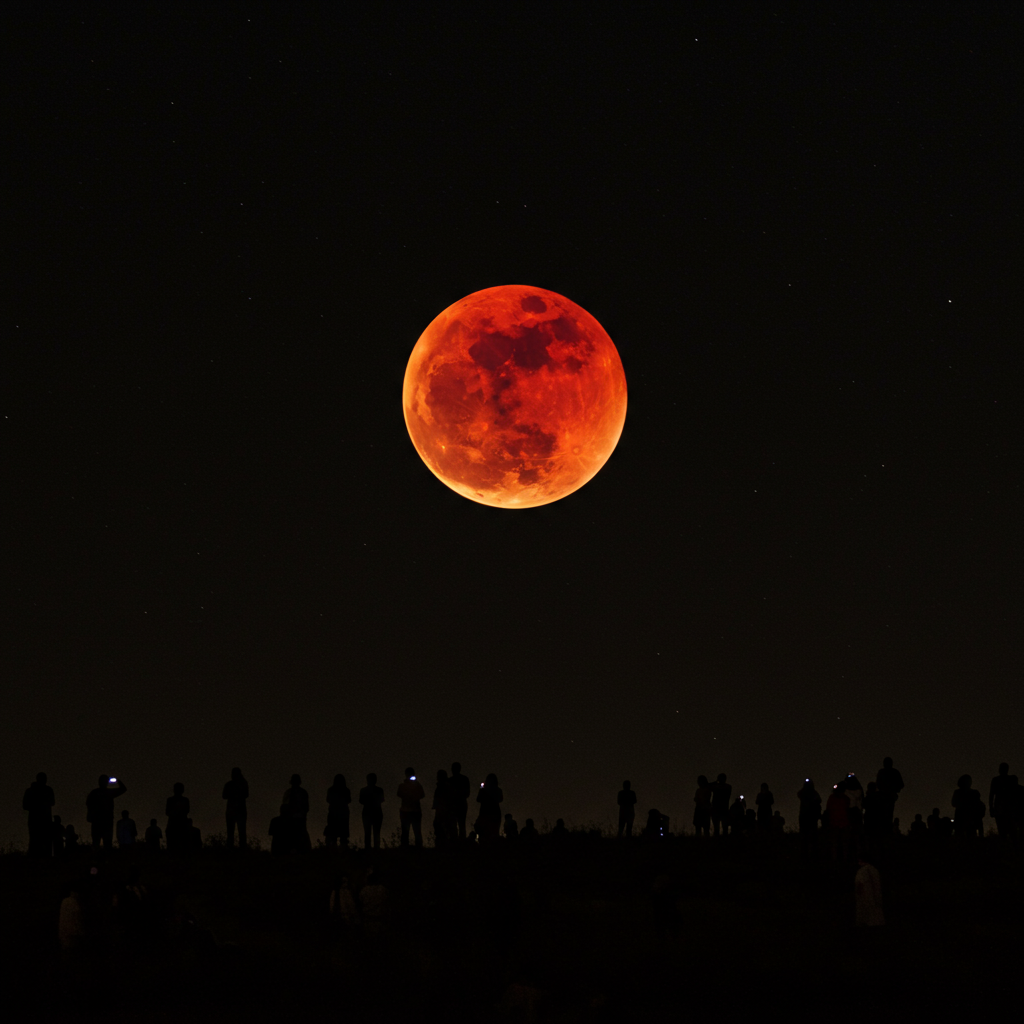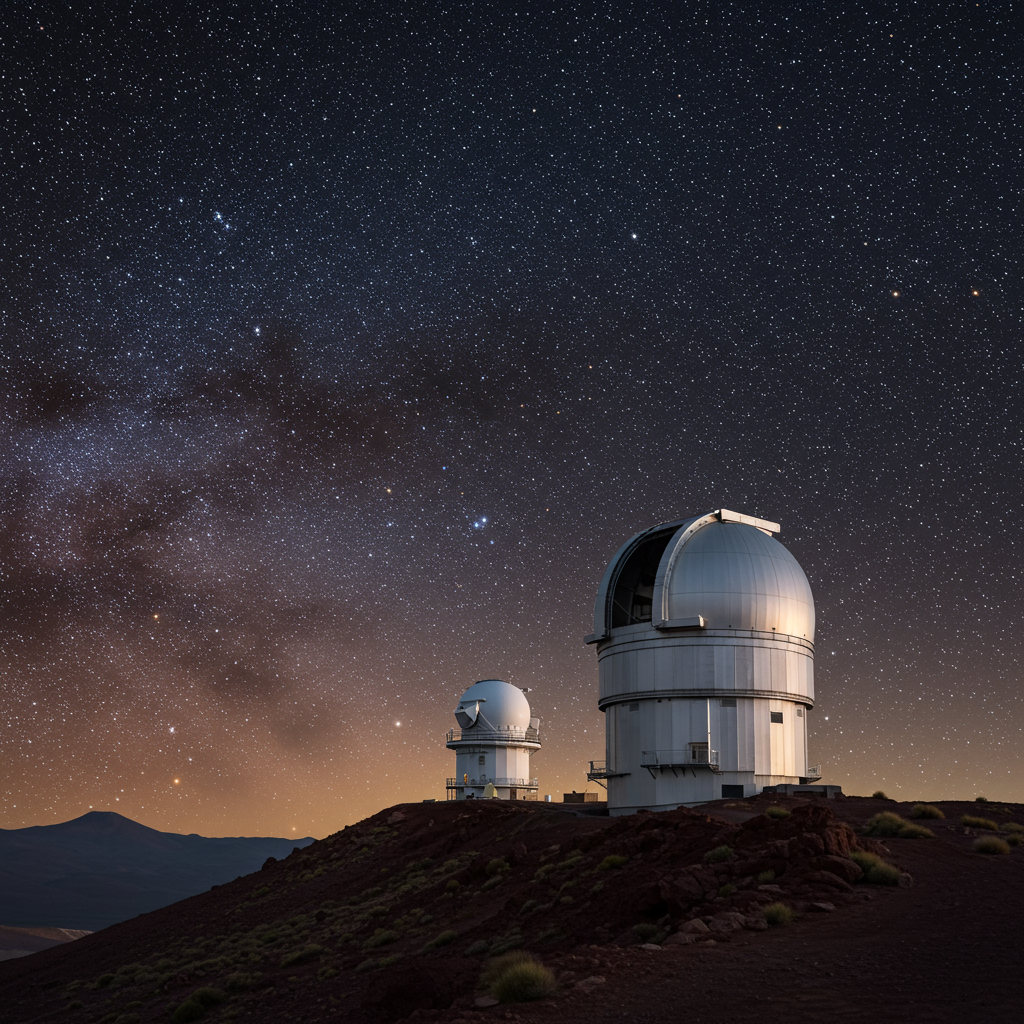Get ready for a spectacular celestial event! On September 7-8, 2025, the sky will host the year’s second total lunar eclipse, commonly known as a Blood Moon. This awe-inspiring phenomenon will transform our full moon into a stunning coppery-red orb, visible to billions across Asia, Australia, Africa, and Europe. For dedicated skywatchers worldwide, understanding when and where to look – or how to stream this cosmic ballet live – is key to experiencing one of nature’s most dramatic shows. Dive into our complete guide to ensure you don’t miss a moment of this extraordinary lunar display.
The Science Behind the Spectacle: Why a “Blood Moon”?
A total lunar eclipse, or “Blood Moon,” is much more than just the moon disappearing. It’s a grand demonstration of our solar system’s mechanics. This happens when the Earth positions itself directly between the sun and the moon. Our home planet then casts a shadow, completely obscuring the full moon. But why does it turn red?
Earth’s Atmospheric Prism
The moon doesn’t actually vanish into darkness. Instead, Earth’s atmosphere acts like a giant prism, bending sunlight. As explained by Rachel Dutton of the Royal Astronomical Society, blue light wavelengths are scattered away by our atmosphere (the same reason our sky is blue and sunsets are red). This process, known as Rayleigh scattering, allows longer, red wavelengths to pass through. These red hues then project onto the lunar surface, painting it in shades of rusty orange, coppery-red, or even brown. The depth of the eclipse, meaning how centrally the moon passes through Earth’s deepest shadow (the umbra), influences the intensity of this ruddy glow. A “deep” eclipse, like this one, typically produces a darker, more vivid red. Essentially, you’re witnessing every sunrise and sunset on Earth projected onto the moon!
Understanding Eclipse Types
Not all lunar eclipses are created equal. NASA defines three distinct types:
Total Lunar Eclipse: This is the most dramatic. The moon fully enters Earth’s inner shadow, or umbra, causing it to glow reddish. The September 2025 event is a total lunar eclipse.
Partial Lunar Eclipse: Here, only a portion of the moon enters the umbra. This creates a visible dark segment on the moon’s surface.
Penumbral Lunar Eclipse: The most subtle type. The moon only passes through Earth’s fainter, outer shadow, the penumbra. This often results in a barely perceptible dimming of the moon’s light, making it difficult to notice without careful observation. The September 2025 event will include partial and penumbral stages before and after totality.
Where to Witness the September 2025 Total Lunar Eclipse
This particular blood moon total lunar eclipse offers prime viewing opportunities for a significant portion of the globe, though not everyone will have the same experience. The entire spectacle, from the first “dusky bite” to full re-emergence, will span over five hours. The period of totality, when the moon is fully immersed in Earth’s shadow, will last an impressive 82 minutes (one hour and 22 minutes).
Prime Viewing Zones
For those hoping to catch every moment, from start to finish, the “best seats in the cosmos” are found across a vast stretch of the Eastern Hemisphere.
Asia: From Saudi Arabia across to the Philippines, and extending from the Arctic Ocean all the way down to Antarctica, Asia will experience the full eclipse. This includes major population centers where the event unfolds during Sunday night and early Monday local time.
Western Australia: Skywatchers in cities like Perth will have an excellent view, with totality occurring from 1:30–2:52 a.m. local time.
East Africa: Parts of this region will also enjoy a complete view of the lunar transformation.
Partial Views and Challenges
Other regions will catch some, but not all, of the action:
Eastern Australia and New Zealand: These areas will see most of the eclipse phases.
Africa (remainder) and Europe: Observers here will largely witness the total lunar eclipse already in progress at moonrise. This means the blood-red moon will ascend above the eastern horizon already darkened. For instance, in Berlin, the moon rises just as totality begins at 7:37 p.m. CEST. In London, moonrise is at 7:30 p.m. BST, shortly after totality has begun. A clear, unobstructed view low to the eastern horizon is essential for these locations, as an eclipsed moon appears dimmer than usual. Better views in Europe will be available further east.
Small Portions: Even tidbits of the eclipse will be visible from the Brazilian coast and parts of Alaska.
North America’s Perspective
Unfortunately for North American skywatchers, this blood moon total lunar eclipse will not be visible. The continent will be on the day-side of Earth during the eclipse, meaning residents in the United States, including Ohio, will entirely miss out on this particular celestial display. However, there’s good news on the horizon: North Americans won’t have to wait long, as the next total lunar eclipse on March 2-3, 2026, will offer prime viewing opportunities across Asia, Australia, and North America, particularly along the US West Coast.
How to Watch: Live Streams and Stargazing Tips
Even if you’re not in a prime viewing location, or if local weather conditions are uncooperative, modern technology ensures you can still experience this incredible total lunar eclipse. For many, it will be a truly “web-based spectator sport.”
Reliable Online Broadcasts
Several trusted sources will provide high-quality live streams, ensuring you don’t miss the moon’s dramatic transformation. Beware of channels using old footage!
The Virtual Telescope Project: This project, led by Gianluca Masi, will offer real-time views from Manciano, Italy. Their live feed is scheduled to begin at 1:45 p.m. EDT (17:45 UTC) on Sunday, September 7. For Italian viewers, totality will begin shortly after moonrise, during civil twilight, adding a unique bronze hue that will deepen as the sky darkens.
Timeanddate.com: Renowned for consistent, high-quality eclipse coverage, Timeanddate.com will feature real-time animations, detailed maps, precise timings, and expert commentary. Their mobile observatory for this event will be located in Cyprus.
Essential Stargazing Advice
For those lucky enough to be in a viewing zone with clear skies, here are some tips from experts like Maddie Molloy and Dr. Edward Bloomer for the best experience:
Find a Clear Horizon: Seek out an unobstructed view of the eastern horizon, especially if you’re in a region where the eclipse begins around moonrise. Hills or popular viewpoints are ideal.
Check Local Weather: Cloud cover can quickly ruin the view. Consult local forecasts closer to the date.
No Special Equipment Needed: Unlike solar eclipses, lunar eclipses are entirely safe to watch with the naked eye. You don’t need protective eyewear. Binoculars or a small telescope can enhance the view, revealing lunar details and the subtleties of the red color, but they are not essential.
Be Patient: If watching around moonrise, give the moon 10-20 minutes to clear the horizon and for its color to become more distinct.
Enjoy the Unity: As many observers note, witnessing a global celestial event like this can be a unifying experience, reminding us we are all under one shared night sky.
Beyond the Blood Moon: Other Celestial Events
The September 2025 Blood Moon isn’t the only astronomical highlight of the month. Eclipses rarely occur in isolation, often appearing in pairs about two weeks apart.
Just two weeks after the total lunar eclipse, a partial solar eclipse is slated for September 21, 2025. However, this event will primarily be visible from New Zealand, a sliver of Australia, Antarctica, and parts of the Pacific and Atlantic Oceans, again bypassing the United States. This partial solar eclipse notably occurs one day before the fall equinox on September 22, marking the astronomical start of autumn.
Looking further ahead, the October 2025 full moon will be known as the Hunter’s Moon, rising on October 6. For those in regions that missed this September’s blood moon, mark your calendars for March 2-3, 2026, for the next total lunar eclipse visible in North America and other parts of the world.
Frequently Asked Questions
What exactly causes the moon to appear red during a total lunar eclipse?
The striking red color of a “Blood Moon” is caused by Earth’s atmosphere. During a total lunar eclipse, the Earth positions itself directly between the sun and the moon. Instead of completely blocking sunlight, our atmosphere acts like a lens, scattering shorter blue light wavelengths away and bending longer, red light wavelengths. This red light is then filtered and projected onto the moon’s surface, similar to how sunsets appear red on Earth. The amount of dust or clouds in Earth’s atmosphere at the time can influence the intensity of this reddish hue, making it appear anywhere from rusty orange to a deep, dark red.
Where will the September 7-8, 2025 total lunar eclipse be best visible, and can I stream it if I’m not in a viewing zone?
The September 2025 total lunar eclipse will be best and fully visible across a vast area including most of Asia (from Saudi Arabia to the Philippines, extending north to the Arctic and south to Antarctica), Western Australia, and parts of East Africa. Other regions like Europe and the rest of Africa and Australia will see partial views or moonrise during totality. North and South America will largely miss this particular event. Fortunately, you can stream it live! Reliable platforms like The Virtual Telescope Project (starting 1:45 p.m. EDT / 17:45 UTC on September 7) and Timeanddate.com will offer high-quality broadcasts with expert commentary, ensuring everyone can witness the spectacular event.
What are the best tips for observing a total lunar eclipse safely and effectively?
Observing a total lunar eclipse is safe and requires no special equipment, unlike solar eclipses. To maximize your viewing experience, find a location with a clear, unobstructed view of the eastern horizon, especially if the eclipse is occurring around moonrise in your area. Checking local weather forecasts for cloud cover is crucial. While your naked eye is perfectly fine, binoculars or a small telescope can enhance the view of lunar details and the subtle changes in color. Be patient, particularly if the moon is low on the horizon, as it may take 10-20 minutes for its full reddish glow to become distinct after moonrise.
Conclusion
The September 7-8, 2025 total lunar eclipse, transforming our full Corn Moon into a mesmerizing Blood Moon, promises to be a memorable celestial spectacle. Whether you’re in Asia with a front-row seat, catching a glimpse from Europe, or tuning into a live stream from the Americas, this event offers a profound connection to the cosmos. Understanding the science behind its crimson glow and knowing where and when to look are your keys to unlocking this astronomical marvel. So prepare your viewing spot or bookmark your favorite live stream, and get ready to witness the stunning mechanics of our solar system unfold above us.




